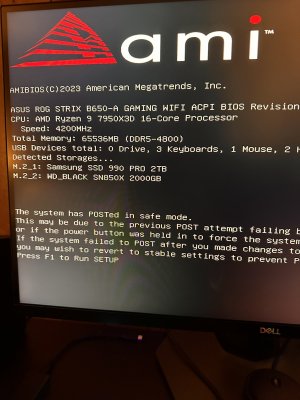This is my first AMD CPU and I would like some advice on how to set it up. I have heard of PBO and XMP. Obviously I would like to get the most performance out of it that I can but I am not going to manually overclock it, I hear that the gains are minimal over auto clocking.
This is just a gaming machine. It would be nice to get tips for an ASUS motherboard since that is what I have. Full specs below.
Thanks!
GPU ASUS TUF GeForce RTX® 4090 OC Edition
MB ASUS ROG Strix B650E-F Gaming WiFi
CPU 7800X3D
RAM Dominator Platinum RGB 32GB DDR5-6000 CL36
Cooler Corsair iCUE H150i ELITE LCD
This is just a gaming machine. It would be nice to get tips for an ASUS motherboard since that is what I have. Full specs below.
Thanks!
GPU ASUS TUF GeForce RTX® 4090 OC Edition
MB ASUS ROG Strix B650E-F Gaming WiFi
CPU 7800X3D
RAM Dominator Platinum RGB 32GB DDR5-6000 CL36
Cooler Corsair iCUE H150i ELITE LCD
![[H]ard|Forum](/styles/hardforum/xenforo/logo_dark.png)
